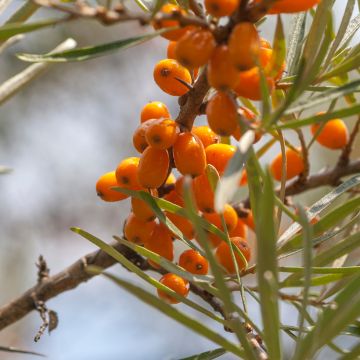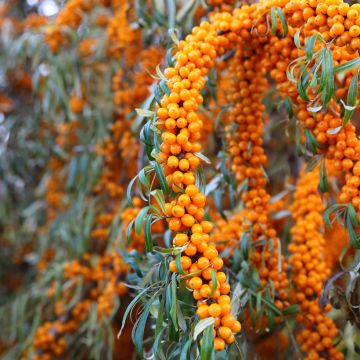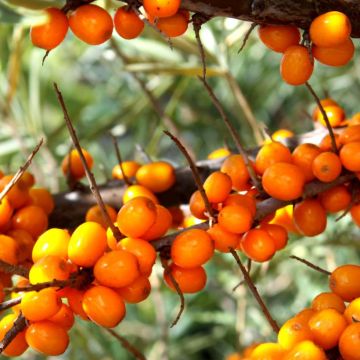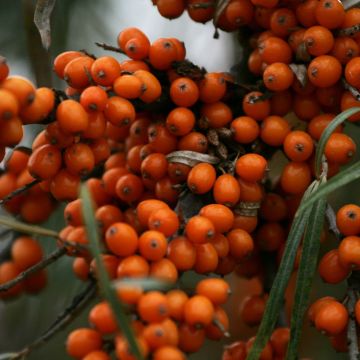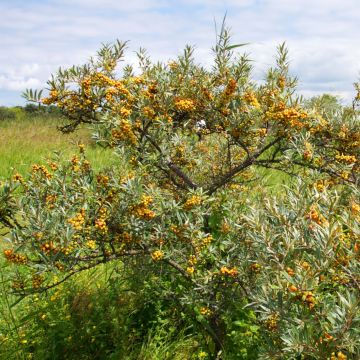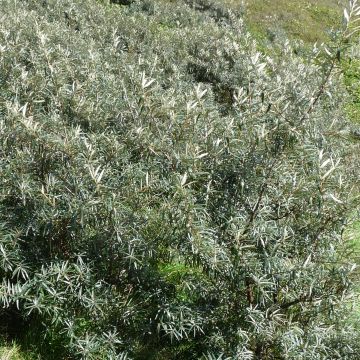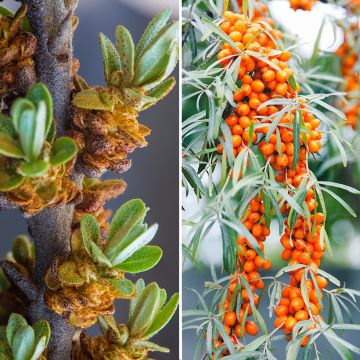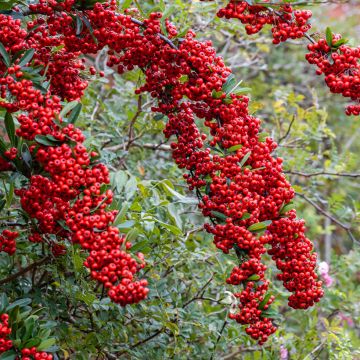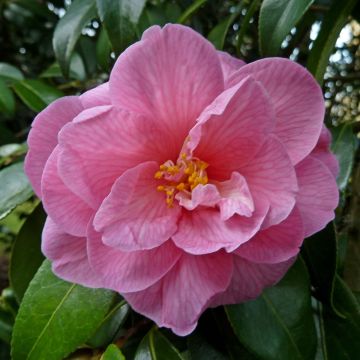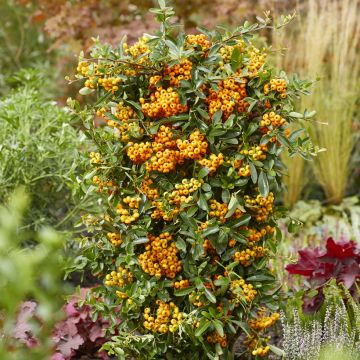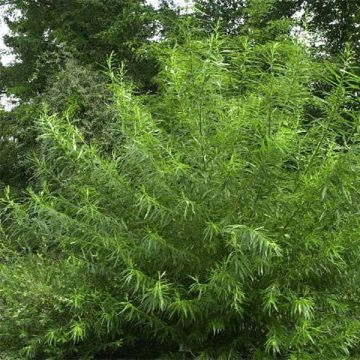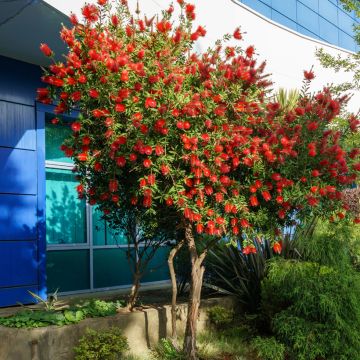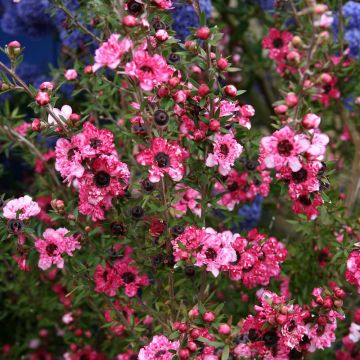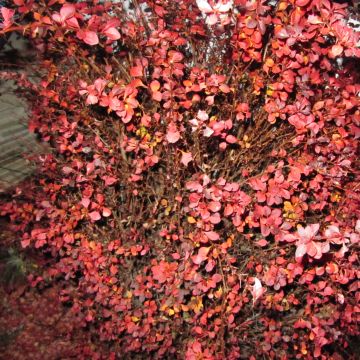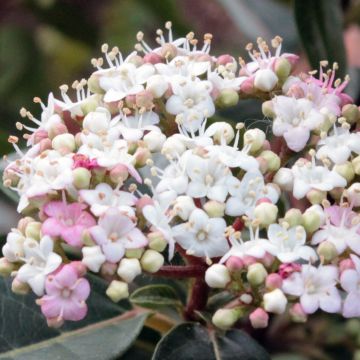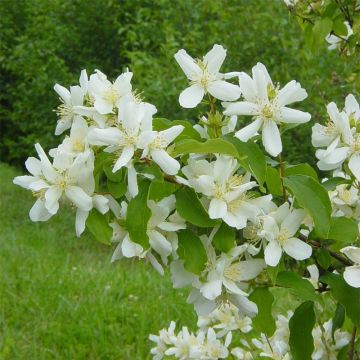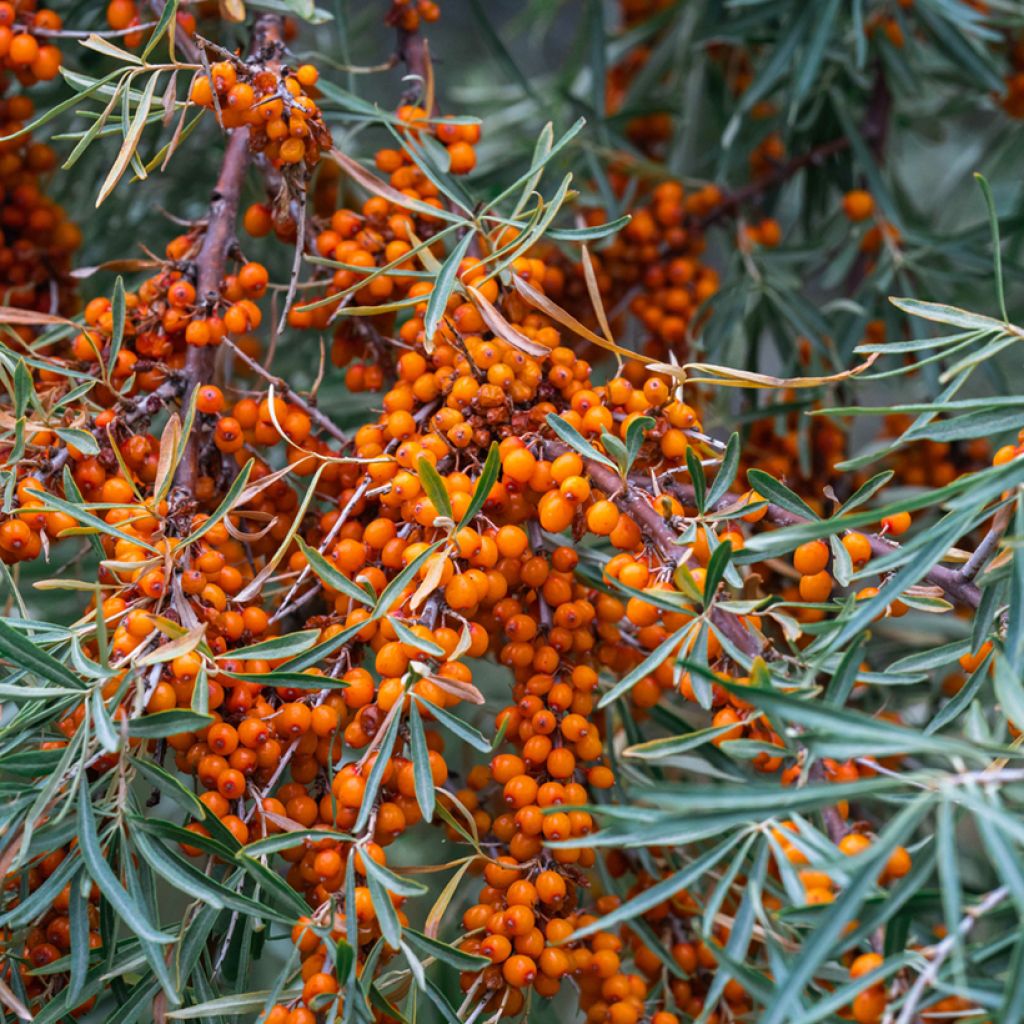

Hippophae rhamnoides Sirola - Sea buckthorn
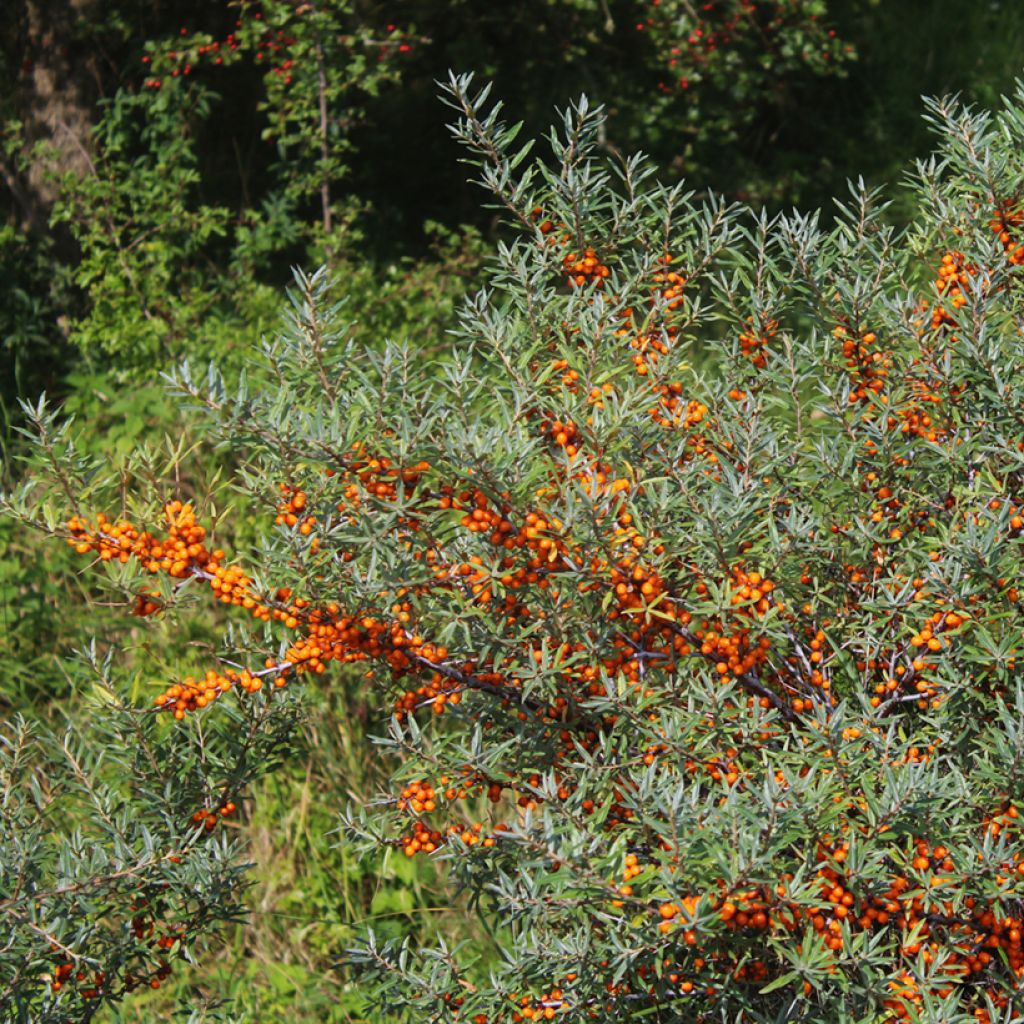

Hippophae rhamnoides Sirola - Sea buckthorn
Hippophae rhamnoides Sirola - Sea buckthorn
Hippophae rhamnoides Sirola
Sea buckthorn
Why not try an alternative variety in stock?
View all →This plant carries a 24 months recovery warranty
More information
We guarantee the quality of our plants for a full growing cycle, and will replace at our expense any plant that fails to recover under normal climatic and planting conditions.
From €5.90 for pickup delivery and €6.90 for home delivery
Express home delivery from €8.90.
Does this plant fit my garden?
Set up your Plantfit profile →
Description
Sea Buckthorn 'Sirola' is a female cultivar of Hippophae rhamnoides known for its early ripeness, productivity, and columnar habit. It produces medium to large, orange-red fruits with a sweet taste, ripening as early as late July. It is also a variety with few suckers, suitable for family gardens. Highly decorative, its berries are also rich in vitamins C, A, and E, and other antioxidant compounds. They can be used to make juices, jams, jellies, and syrups. This deciduous, moderately thorny bush grows quickly, adapts to poor soils, and withstands very cold winters. Plant it as an informal hedge or a defensive hedge not far from a male variety such as Pollmix.
Sea Buckthorn belongs to the Elaeagnaceae family. Hippophae rhamnoides, also known as Thorny Willow, Siberian Olive, or False Buckthorn, is a botanical species native to temperate regions of Europe and Asia. It is a very thorny shrub spreading through numerous suckers, reaching up to 5 m in height or more. It is a pioneer plant, able to grow on mountainsides as well as in dunes. Nodules containing nitrogen-fixing bacteria develop on its roots, indicating excellent adaptation to poor soils.
Apart from a few self-fertile varieties, sea buckthorn bears either male or female flowers: it is a dioecious plant pollinated by insects. One male plant can pollinate five to six female plants. Berries are produced on female bushes from the 2nd or 3rd year onwards.
The female sea buckthorn 'Sirola' is a result of cross-breeding between a Siberian cultivar and the 'Pollmix' cultivar. The bush has an upright, somewhat columnar habit. At maturity, it reaches 3 m in height with an approximate spread of 1.50 m. Its flexible branches bear narrow, elongated, 5-6 cm long leaves with short petioles. Arranged alternately on the branches, they are dark green on top and grey underneath. The subtle, greenish-yellow flowering, occurs in April-May. The fruits are quite large (average 5.2 grams), elongated oval to cylindrical, with silvery-grey scales at their tips. Harvesting is easy as each fruit is borne on a fairly long peduncle. Ripening between late July and early August, these fruits have a beautiful orange-red colour. 'Sirola' sea buckthorn berries are very rich in vitamin C (about 30 times more than an orange). They are moderately acidic and can be eaten fresh. They can also be used for making jams, syrups, or sauces that complement meats and fish well.
Hippophae rhamnoides 'Sirola' is ornamental for its fruiting and foliage, valuable for its berries with great nutritional qualities. This bush is used in informal or defensive hedges in a natural garden. To complement it, consider Halimodendron halodendron with pink spring flowers, Caragana arborescens resembling it but adorned with yellow pea flowers. Coyote Willow, able to thrive in dry, poor soil, will also blend perfectly with these bushes, as will Spring Tamarisk.
Report an error about the product description
Hippophae rhamnoides Sirola - Sea buckthorn in pictures


Plant habit
Flowering
Foliage
Botanical data
Hippophae
rhamnoides
Sirola
Elaeagnaceae
Sea buckthorn
Cultivar or hybrid
Other Hippophae
Planting and care
Sea Buckthorn 'Sirola' is ideally planted in autumn or early spring. Choose a very sunny location, or possibly slightly shaded in the afternoon in the south. Sea Buckthorn adapts to all types of soil, from acidic to limestone, even poor soils. Soak the root ball in water for fifteen minutes before planting. Dig a wide and deep hole. Position the top of the root ball level with the ground and backfill laterally with soil. Water at the time of planting. If you plant in autumn and it rains occasionally, further watering will not be necessary. Somewhat sensitive to summer drought in its early years, it becomes very drought-tolerant once deeply rooted.
Robust, not very susceptible to diseases and pests, Sea Buckthorn does not require any particular care.
Planting period
Intended location
Care
This item has not been reviewed yet - be the first to leave a review about it.
Hedge shrubs
Haven't found what you were looking for?
Hardiness is the lowest winter temperature a plant can endure without suffering serious damage or even dying. However, hardiness is affected by location (a sheltered area, such as a patio), protection (winter cover) and soil type (hardiness is improved by well-drained soil).

Photo Sharing Terms & Conditions
In order to encourage gardeners to interact and share their experiences, Promesse de fleurs offers various media enabling content to be uploaded onto its Site - in particular via the ‘Photo sharing’ module.
The User agrees to refrain from:
- Posting any content that is illegal, prejudicial, insulting, racist, inciteful to hatred, revisionist, contrary to public decency, that infringes on privacy or on the privacy rights of third parties, in particular the publicity rights of persons and goods, intellectual property rights, or the right to privacy.
- Submitting content on behalf of a third party;
- Impersonate the identity of a third party and/or publish any personal information about a third party;
In general, the User undertakes to refrain from any unethical behaviour.
All Content (in particular text, comments, files, images, photos, videos, creative works, etc.), which may be subject to property or intellectual property rights, image or other private rights, shall remain the property of the User, subject to the limited rights granted by the terms of the licence granted by Promesse de fleurs as stated below. Users are at liberty to publish or not to publish such Content on the Site, notably via the ‘Photo Sharing’ facility, and accept that this Content shall be made public and freely accessible, notably on the Internet.
Users further acknowledge, undertake to have ,and guarantee that they hold all necessary rights and permissions to publish such material on the Site, in particular with regard to the legislation in force pertaining to any privacy, property, intellectual property, image, or contractual rights, or rights of any other nature. By publishing such Content on the Site, Users acknowledge accepting full liability as publishers of the Content within the meaning of the law, and grant Promesse de fleurs, free of charge, an inclusive, worldwide licence for the said Content for the entire duration of its publication, including all reproduction, representation, up/downloading, displaying, performing, transmission, and storage rights.
Users also grant permission for their name to be linked to the Content and accept that this link may not always be made available.
By engaging in posting material, Users consent to their Content becoming automatically accessible on the Internet, in particular on other sites and/or blogs and/or web pages of the Promesse de fleurs site, including in particular social pages and the Promesse de fleurs catalogue.
Users may secure the removal of entrusted content free of charge by issuing a simple request via our contact form.
The flowering period indicated on our website applies to countries and regions located in USDA zone 8 (France, the United Kingdom, Ireland, the Netherlands, etc.)
It will vary according to where you live:
- In zones 9 to 10 (Italy, Spain, Greece, etc.), flowering will occur about 2 to 4 weeks earlier.
- In zones 6 to 7 (Germany, Poland, Slovenia, and lower mountainous regions), flowering will be delayed by 2 to 3 weeks.
- In zone 5 (Central Europe, Scandinavia), blooming will be delayed by 3 to 5 weeks.
In temperate climates, pruning of spring-flowering shrubs (forsythia, spireas, etc.) should be done just after flowering.
Pruning of summer-flowering shrubs (Indian Lilac, Perovskia, etc.) can be done in winter or spring.
In cold regions as well as with frost-sensitive plants, avoid pruning too early when severe frosts may still occur.
The planting period indicated on our website applies to countries and regions located in USDA zone 8 (France, United Kingdom, Ireland, Netherlands).
It will vary according to where you live:
- In Mediterranean zones (Marseille, Madrid, Milan, etc.), autumn and winter are the best planting periods.
- In continental zones (Strasbourg, Munich, Vienna, etc.), delay planting by 2 to 3 weeks in spring and bring it forward by 2 to 4 weeks in autumn.
- In mountainous regions (the Alps, Pyrenees, Carpathians, etc.), it is best to plant in late spring (May-June) or late summer (August-September).
The harvesting period indicated on our website applies to countries and regions in USDA zone 8 (France, England, Ireland, the Netherlands).
In colder areas (Scandinavia, Poland, Austria...) fruit and vegetable harvests are likely to be delayed by 3-4 weeks.
In warmer areas (Italy, Spain, Greece, etc.), harvesting will probably take place earlier, depending on weather conditions.
The sowing periods indicated on our website apply to countries and regions within USDA Zone 8 (France, UK, Ireland, Netherlands).
In colder areas (Scandinavia, Poland, Austria...), delay any outdoor sowing by 3-4 weeks, or sow under glass.
In warmer climes (Italy, Spain, Greece, etc.), bring outdoor sowing forward by a few weeks.

































